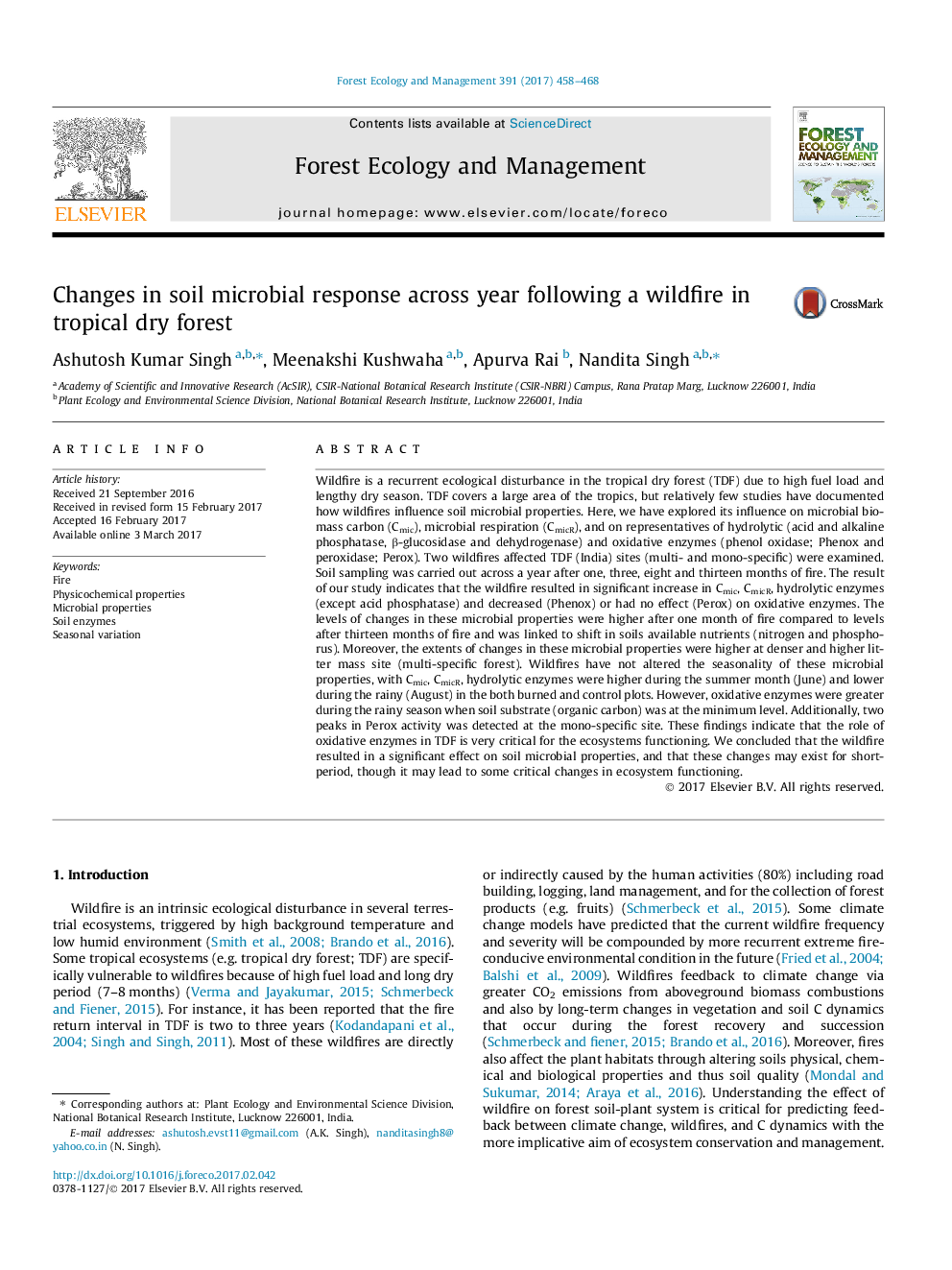| کد مقاله | کد نشریه | سال انتشار | مقاله انگلیسی | نسخه تمام متن |
|---|---|---|---|---|
| 6459490 | 1421367 | 2017 | 11 صفحه PDF | دانلود رایگان |
- Significant changes in soil microbial properties were detected following wildfire.
- These changes were progressively weakened with time.
- These changes were linked to shift in soil's N and P.
- These wildfire induced changes were greater in denser forest.
- Wildfire did not alter the seasonality of soil microbial properties.
Wildfire is a recurrent ecological disturbance in the tropical dry forest (TDF) due to high fuel load and lengthy dry season. TDF covers a large area of the tropics, but relatively few studies have documented how wildfires influence soil microbial properties. Here, we have explored its influence on microbial biomass carbon (Cmic), microbial respiration (CmicR), and on representatives of hydrolytic (acid and alkaline phosphatase, β-glucosidase and dehydrogenase) and oxidative enzymes (phenol oxidase; Phenox and peroxidase; Perox). Two wildfires affected TDF (India) sites (multi- and mono-specific) were examined. Soil sampling was carried out across a year after one, three, eight and thirteen months of fire. The result of our study indicates that the wildfire resulted in significant increase in Cmic, CmicR, hydrolytic enzymes (except acid phosphatase) and decreased (Phenox) or had no effect (Perox) on oxidative enzymes. The levels of changes in these microbial properties were higher after one month of fire compared to levels after thirteen months of fire and was linked to shift in soils available nutrients (nitrogen and phosphorus). Moreover, the extents of changes in these microbial properties were higher at denser and higher litter mass site (multi-specific forest). Wildfires have not altered the seasonality of these microbial properties, with Cmic, CmicR, hydrolytic enzymes were higher during the summer month (June) and lower during the rainy (August) in the both burned and control plots. However, oxidative enzymes were greater during the rainy season when soil substrate (organic carbon) was at the minimum level. Additionally, two peaks in Perox activity was detected at the mono-specific site. These findings indicate that the role of oxidative enzymes in TDF is very critical for the ecosystems functioning. We concluded that the wildfire resulted in a significant effect on soil microbial properties, and that these changes may exist for short-period, though it may lead to some critical changes in ecosystem functioning.
118
Journal: Forest Ecology and Management - Volume 391, 1 May 2017, Pages 458-468
